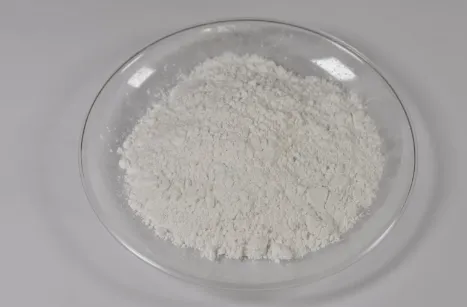Mar . 04, 2025 09:02
Back to list
edible mica powder
Mica powder is a versatile substance that finds its application across various industries due to its unique properties. As a fine mineral powder that sparkles like glitter, mica powder is popular among artists, cosmetic enthusiasts, and even in industrial settings. Here are some of the many ways mica powder can be utilized, showcasing why it's an essential material with extensive possibilities.
Mica powder's use extends into the construction industry as well. It can be found in drywall compounds, plaster, and other building materials, where its role is to enhance thermal and chemical stability. Its lamellar structure imparts exceptional resistance to cracking, reducing the need for repairs and maintenance on constructed surfaces. Furthermore, mica powder contributes to soundproofing by inhibiting the transmission of sound waves, thus improving the acoustics of various structures. Education and research facilities benefit from mica powder's properties too. In laboratories, mica is used in thermoplastic polymers and as an insulative material in electrical and thermal equipment. Its ability to withstand high temperatures and its electrical insulation characteristics make it invaluable for research in materials science. Mica substrates are also used in scientific experiments that require extremely flat and smooth surfaces, like atomic force microscopy. For home décor enthusiasts, mica powder is instrumental in creating custom paints and wallpapers to elevate living spaces. Its metallic luster can transform ordinary walls into statement pieces with a variety of shimmering hues. This aesthetic versatility encourages homeowners to experiment with dynamic textures and finishes, offering a personalized touch to home interiors. In summary, mica powder is more than just a medium for artistic expression or a component in facial products. It is a material of substantial import across multiple industries. Its adaptability, safety, and aesthetic appeal make it indispensable, whether enhancing the durability of industrial products or adding a touch of brilliance to artistic creations. As consumers continue to explore creative applications for mica powder, its popularity and utility are bound to grow, reflecting its fundamental role in both commercial and personal use.


Mica powder's use extends into the construction industry as well. It can be found in drywall compounds, plaster, and other building materials, where its role is to enhance thermal and chemical stability. Its lamellar structure imparts exceptional resistance to cracking, reducing the need for repairs and maintenance on constructed surfaces. Furthermore, mica powder contributes to soundproofing by inhibiting the transmission of sound waves, thus improving the acoustics of various structures. Education and research facilities benefit from mica powder's properties too. In laboratories, mica is used in thermoplastic polymers and as an insulative material in electrical and thermal equipment. Its ability to withstand high temperatures and its electrical insulation characteristics make it invaluable for research in materials science. Mica substrates are also used in scientific experiments that require extremely flat and smooth surfaces, like atomic force microscopy. For home décor enthusiasts, mica powder is instrumental in creating custom paints and wallpapers to elevate living spaces. Its metallic luster can transform ordinary walls into statement pieces with a variety of shimmering hues. This aesthetic versatility encourages homeowners to experiment with dynamic textures and finishes, offering a personalized touch to home interiors. In summary, mica powder is more than just a medium for artistic expression or a component in facial products. It is a material of substantial import across multiple industries. Its adaptability, safety, and aesthetic appeal make it indispensable, whether enhancing the durability of industrial products or adding a touch of brilliance to artistic creations. As consumers continue to explore creative applications for mica powder, its popularity and utility are bound to grow, reflecting its fundamental role in both commercial and personal use.
Prev:
Next:
Latest news
-
Transforming Surfaces with Mica-Enhanced Paints in Coatings and DecorationNewsJul.02,2025
-
The Ultimate Guide to Mica-Based Luminous Colors with Pearlescent PigmentNewsJul.02,2025
-
The Critical Role of Mica in Industrial Applications in Welding and Oil FieldsNewsJul.02,2025
-
Revolutionizing Automotive Aesthetics with Modified Plastics Pearlescent PigmentsNewsJul.02,2025
-
The Secret with Mica Powder for Cosmetics Behind Radiant, Natural MakeupNewsJul.02,2025
-
Enhancing Performance in Polymer Applications with Mica Powder for RubberNewsJul.02,2025
Products categories








